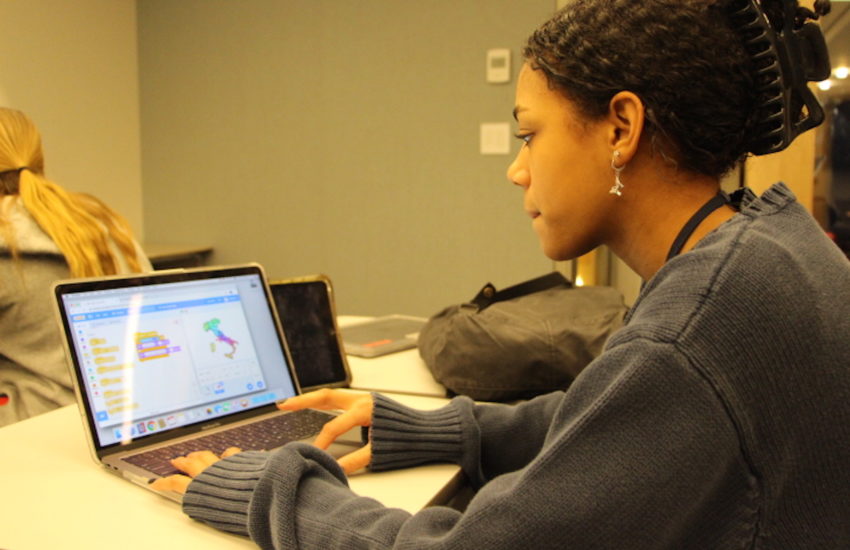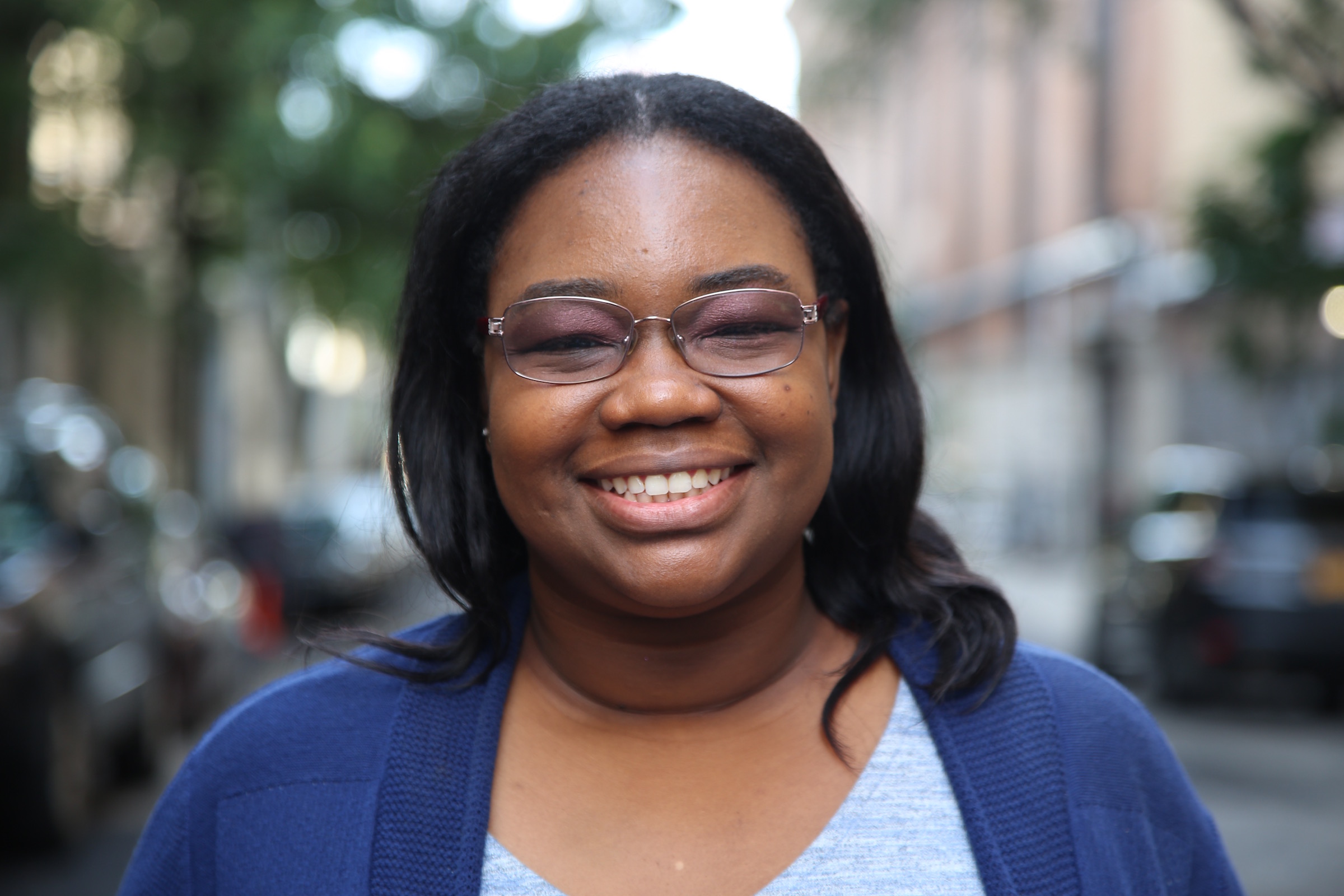The Lycée’s Digital Learning Team hosted its annual Computer Science Fair this week in the auditorium gallery. Students of all ages exhibited their work in coding, electronics, game design, making a website and more. The projects on display were just a small sample of what happens on a given school day in the Lycée’s Computer Science Department. To see more, we recently visited Ms. Morrell’s 8th-grade coding class—where the kids gave us a tour of Scratch, the software for creating stories, games and animations, developed by the MIT Media Lab.

“We are designing a game to help younger kids learn to tell time,” explained Jacob (‘24), while demonstrating on his laptop how to drag and drop visual-based lines of code into sequences. On the right-hand side of his screen, a clock with hands appeared.
“That’s the U.I.,” chimed in Benjamin (‘24). “That means ‘User Interface.’ It’s what kids will see when they play our game.”
Benjamin clicked on a new line of code and dragged it into the left-hand window, where it locked into different commands like pieces of a color-coded puzzle. This produced an immediate effect on the right-hand window, so Benjamin could see if his command was working or not. This visual building-block activity provides a great foundation for later understanding text-based code, which is what professional computer programmers use in the real world.
 Nearby, another group of students was busy designing a game to teach chemistry. They had created a cartoon wizard character and programmed him to ask multiple choice questions about the elements of the Periodic Table. Another group was at work designing a game to teach geography. A beautifully illustrated map of Italy was splashed across their screens.
Nearby, another group of students was busy designing a game to teach chemistry. They had created a cartoon wizard character and programmed him to ask multiple choice questions about the elements of the Periodic Table. Another group was at work designing a game to teach geography. A beautifully illustrated map of Italy was splashed across their screens.
“I didn’t know the geography of Italy before this project, but designing the game helped me learn,” said Aurélie (‘24), showing how she custom-designed the fonts and colors for her game.
Using an educational software like Scratch helps these 13-year-olds to think creatively, reason systematically, and work together. They delegate tasks amongst themselves in order to balance out the workload.
“By the time they get to 8th grade, most kids have already decided how they feel about coding,” says Ms. Morrell. “Some like the design side, some like pure coding. Scratch is great because it’s a bridge of both. It allows them to be creative and build up confidence.”
Ms. Morrell also teaches an after-school class called Girls Who Code, which aims to close the gender gap in technology and disrupt stereotypes about what a computer programmer should or shouldn’t look like. She teaches all ages, from middle school to adults.
About the Author :
Portia Morrell joined the Lycée team in 2017. She holds a Bachelor’s degree from Florida International University. Before joining the Lycée, Portia spent over four years in the after-school and summer camp sector creating science and coding units to inspire children to pursue S.T.E.M fields. At the Lycée, you can find Portia exploring algorithms and programs with students in her Computer Science classes. Outside of work, she enjoys exploring New York and relaxing in the park to read, as well as cooking and sewing.













